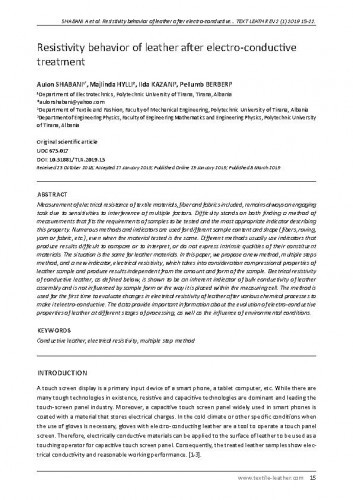Measurement of electrical resistance of textile materials, fiber and fabrics included, remains always an engaging task due to sensitivities to interference of multiple factors. Difficulty stands on both finding a method of measurements that fits the requirements of samples to be tested and the most appropriate indicator describing this property. Numerous methods and indicators are used for different sample content and shape (fibers, roving, yarn or fabric, etc.), even when the material tested is the same. Different methods usually use indicators that produce results difficult to compare or to interpret, or do not express intrinsic qualities of their constituent materials. The situation is the same for leather materials. In this paper, we propose a new method, multiple steps method, and a new indicator, electrical resistivity, which takes into consideration compressional properties of leather sample and produce results independent from the amount and form of the sample. Electrical resistivity of conductive leather, as defined below, is shown to be an inherent indicator of bulk conductivity of leather assembly and is not influenced by sample form or the way it is placed within the measuring cell. The method is used for the first time to evaluate changes in electrical resistivity of leather after various chemical processes to make it electro-conductive. The data provide important information about the evolution of electro-conductive properties of leather at different stages of processing, as well as the influence of environmental conditions.
Sažetak

 Textile & leather review : 2,1(2019) / editor-in-chief Srećko Sertić.
Textile & leather review : 2,1(2019) / editor-in-chief Srećko Sertić.